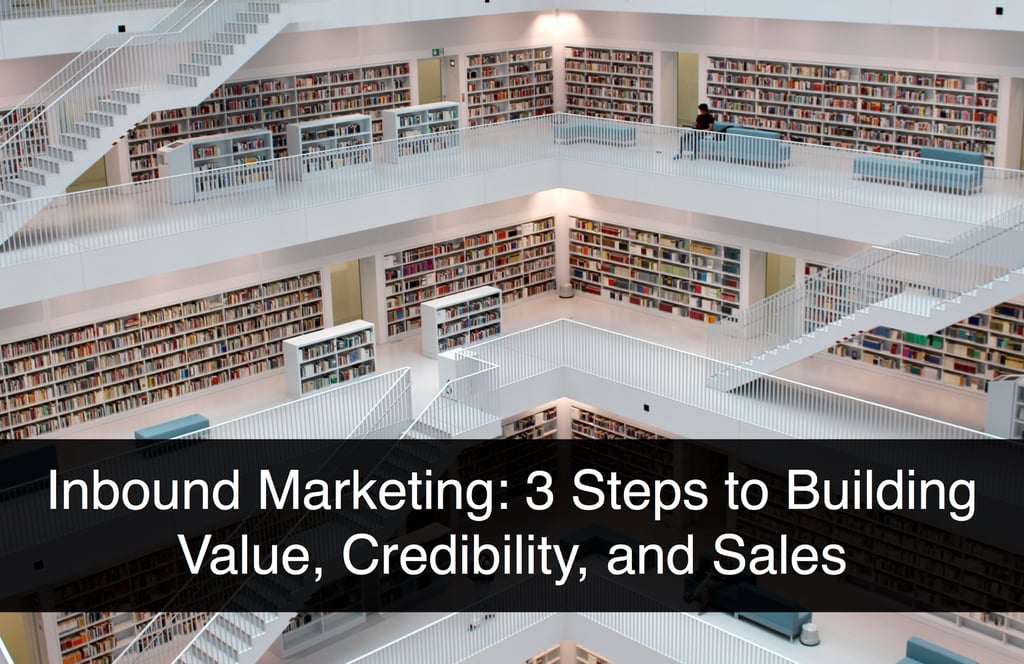
Today’s buyers drive the sales process by contacting select vendors only after they conduct their own research. Vendors who want to be in the running must increase both visibility and credibility early on. Many vendors use inbound marketing to proactively raise brand awareness and capture buyers’ attention. Those most successful, incorporate value selling principles into targeted marketing campaigns that are supported by accurate and compelling data.
From discovery to decision, every phase of the sales process is an opportunity to deliver a value message that addresses what’s important to the company and the individuals making the buying decision. Combining inbound marketing with trade shows and targeted outbound B2B marketing campaigns including social media, provides an effective multi-channel approach to communicating your value proposition exactly when buyers are ready to hear it.
1. Start with a Strong Value Proposition
Vendors who use value selling can initiate conversations that emphasize business value over cost. To do so successfully, you must fully understand the business challenges your prospect is facing. Some examples include:
- What trends in their industry or market segment are impacting their organization?
- Are company-specific issues driving new strategies and purchase decisions?
- What’s challenging the individuals making or influencing the buying decision?
Understanding these diverse challenges is not enough. You must also know how your solution solves them, and the respective value it delivers. Different stakeholders have different value propositions, and you must be able to clearly articulate the benefit dimensions and results your solution delivers in familiar and persuasive language.
A B2B lead generation campaign without a solid value proposition won’t get you far. Prospects will be less likely to visit your website and use your value selling tools, and you won’t make the cut to the short-list. Invest the time in getting this messaging right, as it’s the foundation for sales success.
2. Use Inbound Marketing to Build Trust
Inbound marketing is a powerful and effective way to generate leads and give prospects the information they need, when they need it, with the goal of converting them to customers. The earlier in the sales cycle they find you, the more opportunity you have to influence current and future buying decisions with your compelling value proposition.
Because prospects engage with your brand at different points in the sales process, you need to develop content that moves them closer to a decision, and place it where they are most likely to find it. Content should address the complexity of the purchase decision and provide clear, honest answers to their most important questions. This will build trust and a positive reputation in whatever markets you serve.
For best results, create inbound marketing campaigns that tie a specific phase of the sales process to corresponding aspects of your value proposition and the value selling tool that best quantifies your solution’s benefits.
3. Quantify Your Value Proposition with Insightful Data
The goal of an inbound marketing campaign is to drive traffic to your website. Once there, you can reinforce the value of your solution with one or more insightful value selling tools. As an essential part of the customer acquisition sales cycle, each tool should be fully researched, well designed, and easy to use while delivering meaningful results. Their objectivity and credibility will influence the buyer’s purchase decision and help your marketing and sales development teams qualify and nurture prospects.
Various tools can be used to engage prospects, depending on their point in the buying cycle. For example, someone still in the discovery phase will benefit from an assessment tool that quantifies and compares the scope of their issues to industry benchmarks. A value calculator then builds on that assessment by providing more details on the value of your solution.
Tools calculating Total Cost of Ownership (TCO) and Return on Investment (ROI) are ideal for qualifying prospects deeper into the sales cycle. Most prospects at this stage are ready to buy and now is the time to produce the business case for your solution and close the sale.
Conclusion
Successful vendors use an integrated sales and marketing strategy that combines inbound marketing with value selling messaging and tools. This three-pronged approach distinguishes you from the competition by explicitly matching buyer concerns with solution benefits, and providing data-driven proof points early in the sales process.
Getting it right means developing comprehensive ROI and assessment tools that build trust. Learn more about developing value selling tools that inform, persuade, and simplify purchase decisions.
Follow these three steps to generate more qualified leads and develop a reputation for value that makes you a contender for a seat at the table.









